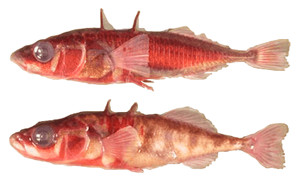
The Stickleback Fish - A Story of Modern Evolution
Stickleback fish have been widely used as models for studying evolution due to several reasons:
-
Adaptation to Different Environments: Sticklebacks are found in various environments, including freshwater and marine habitats. Populations in these different environments have evolved distinct traits, such as body armor, spine length, and jaw morphology, in response to specific ecological challenges.
-
Rapid Evolutionary Changes: Sticklebacks exhibit relatively rapid evolutionary changes. Researchers can observe and study adaptations within a short time frame, making them suitable for experimental evolution studies.
-
Transparent Embryos: Stickleback embryos are transparent, allowing researchers to observe developmental processes in detail. This transparency is particularly useful for studying the formation of morphological traits and understanding the underlying genetic and molecular mechanisms
This activity uses a virtual lab created by HHMI Biointeractive. To complete this activity students will need a computer with an internet connection and headphones to access videos. This worksheet is modified from the student worksheet provided by HHMI. Also, make sure that your browser allows pop-up windows.

First, students watch a video at Learn.Genetics to learn basic information about the stickleback and its life cycle.
Then, students open the Stickleback Evolution Lab at HHMI. The simulation contains short video clips to provide background information about the study and how fish are captured.
Finally, students perform an experiment where they view fish and determine which have absent, reduced, or complete spines. That information is then graphed to show which type of fish are found at each lake.
The analysis section includes multiple choice questions about the fish and the experiment. Students then summarize how selection strength varies in each type of lake (predators versus no predators).
Use the Google Doc Link below to view the student file. To edit, choose "copy" to add the file to your drive.
Other Resources on Evolution
Evolution and the Rock Pocket Mouse - Students examine mouse populations on different substrates, adapted from HHMI BioInteractive
African Elephant: Change Over Time - examine a graph showing the number of elephants with tusks, showing that the number has changed as a result of poaching
How Did the Guppy Get His Color - guided case study exploring pools in Trinidad and guppy coloration; includes data analysis comparing pools with predators to those without
Lizards in a Hurricane - based on a BioInteractive activity that explores the size of lizard toepads on islands where there are hurricanes (slides/guided activity).
